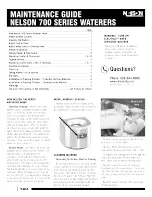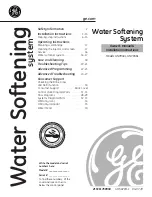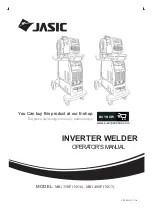
11
7.
Ignition
Connect a user-supplied 18-gauge wire to position
11 of the eleven-position connector. Connect the
other end of the wire to a vehicle circuit that is
powered when the ignition switch is “on.”
C.
Horn Ring Cable
The horn ring cable assembly, located in the
accessory kit, is a 4-wire cable terminating in an
orange edge connector. This connector should
be installed on the mating 4-pin connector (J2)
located on the Control Head PC board, and should
be oriented so that the white wire is closest to
the RJ45 phone jack. The following paragraphs
describe the installation of the leads at the other
end of the horn ring cable.
1.
Horn Ring (figure 3-1)
The horn ring transfer circuit of the siren is capable
of switching a maximum of 10-amperes.
NOTE:
An external relay is not required for horn
ring operation.
If the horn ring will not be used to control siren
operation, fold back and insulate the WHT and
WHT/YEL wires in the power cable and disregard
the procedure in this paragraph. However, in order
to utilize the Tap II and horn ring controlled Air
Horn features of the siren, the following procedure
must be performed.
a. Locate the wire that connects the vehicle
horn ring switch to the horn or horn relay.
Cut this wire.
b. Splice the white/yellow wire in the horn
ring cable to the horn ring side of the wire
that was cut in step a. Insulate the splice
with a wire nut (supplied).
c. Splice the white wire in the horn ring cable
to the horn side of the cut wire. Insulate
the splice with a wire nut (supplied).
2.
Lamp
a. Connect the red wire to the dash lights
circuit or to a vehicle circuit that is
powered when the ignition switch is “on”.
This connection will supply power to the
Control Head panel lights whenever the
headlights are “on” or the vehicle ignition
key switch is in the “on” position.
b. Connect the black wire to the negative
battery terminal.
The Control Head can now be secured to the
vehicle dashboard.
D.
Amplifier Power Connections
When making the power connections to the
PA4000, each wire must be terminated with an
appropriate 1/4" female, insulated, quick-connect
terminal. Complete the wiring to the unit as
follows:
1. Crimp the 1/4" female terminals on one end
of user-supplied 14 gauge red and black wires.
See figure 3-1. Connect the red wire to the
“POS” Amplifier connection. Connect the black
wire to the “NEG” Amplifier connection.
DRILLING PRECAUTIONS: When drilling into
a vehicle structure, be sure that both sides of
the surface are clear of anything that could be
damaged. All drilled holes should be deburred and
all sharp edges should be smoothed. All wires
going through drilled holes should be protected
by a grommet or convolute/split-loom tubing.
Additionally, all exterior drilled holes must be
sealed with Motorcraft seam sealer T-A-2-B or
equivalent to prevent the potential exposureto
carbon monoxide or other potentially harmful
fumes. Failure to observe this warning could cause
serious injury or death.
2. If the Amplifier is installed in the vehicle
passenger compartment, it will be necessary to
drill a 5/8" hole in the vehicle firewall for the
power and ground leads.
If necessary, drill a 5/8" hole in the vehicle firewall.
Install a user-supplied 5/8" grommet, or similar
device or material, to protect the wiring and
cabling against damage from rough edges.
3. Route the leads from the Amplifier to an area
near the battery. (Do not connect to battery at
this time.) If necessary, pass the lead through
the 5/8" hole that was drilled in step 2.





































